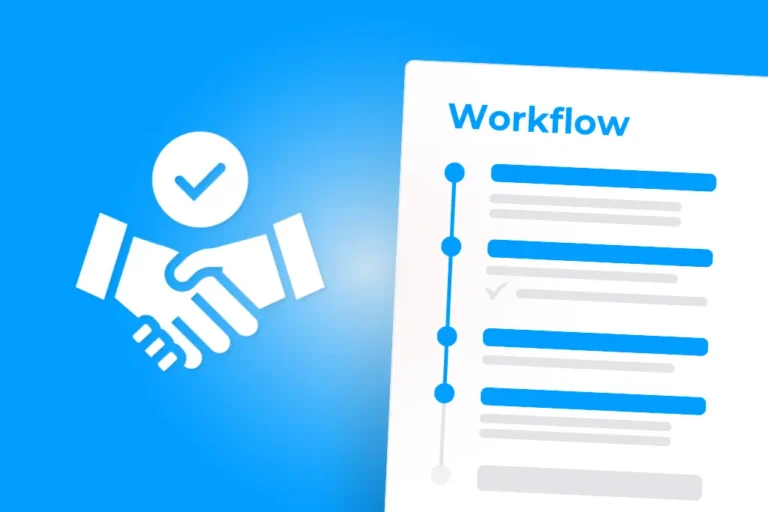The digitalization of legal departments is a long-running trend growing more and more popular with an increasing number of companies, all with the same need: to simplify their business processes.
Are you looking to follow suit and digitalize your legal department? Before taking your first steps into this new project, here are the three key questions you should be asking yourself.

#1. What does my legal department’s day-to-day operations look like?
This is the first question to consider before launching into any digitalization project. After all, the aim of the project is to improve existing processes, meaning that you will first need to have a good understanding of how they work. Realistically, discovering this will require a full audit of all your legal department’s practices. This analysis can be broken down into several questions:
- What does a typical day or week in the legal department look like?
- What duties and responsibilities do the employees have?
- What are their daily practices and routines?
- What tools do they use?
The more precise and quantifiable the answers to these questions are, the simpler and more targeted the implementation of your project will subsequently prove to be. At this stage, there is no need to identify the challenges being faced by the staff; the idea is merely to gain an understanding of how the department operates.
The question regarding tools is particularly important, as it points you in the direction of what the legal team’s technical requirements are. Gaining an understanding of existing tools will help you find a better fit when implementing future solutions.
#2. What are the areas for improvement and the main challenges faced by the teams?
This second question is crucial, as it will determine the direction of the entire project, in other words, the choice of legal tech solution and how it will be implemented.
Digitalizing legal departments actually assists in addressing the daily challenges of not only the lawyers themselves, but also the various other departments they interact with (marketing, purchasing, human resources, etc.).
📚 Read also: Digitalizing Legal Departments: Tips on Implementing Your Legal Tech
Identifying these difficulties should be as precise and comprehensive as possible. With this in mind, any needs and sticking points should be sought out and identified both within the legal department and with the operational staff who assist it. After all, any new tools introduced will have an impact on all departments.
Legal tech tools are, in actual fact, used a great deal more by the operational staff than by lawyers themselves!
Some examples of things you can do to collect the staff’s reflections on the issues they encounter include:
- organizing workshops in each department, being sure to carefully follow the agenda;
- conducting interviews with individuals or in small groups, by team;
- sending out online questionnaires.
Workshops and interviews have the advantage of humanizing the preparation of the project, opening up opportunities for discussion. Online questionnaires, meanwhile, are an ideal solution for gathering as much data as possible in a short space of time. It is up to you to choose the method that best suits your constraints, requirements and available time.
#3. What are the goals of the digitalization project?
Digitalizing a legal department is a project with specific aims, which usually revolve around the idea of efficiency. Any well-executed project must be guided by at least one clear, fixed and measurable objective, which must be established in advance. Analyzing how the department functions and collecting details of the challenges they face should provide a clear indication of what these objectives are. The more common a difficulty is and the greater its impact on the staff, the more the project should focus on rectifying it.
At this stage of your planning, it is important to involve senior management, as the objectives of this digital transformation are a key element in any strategic approach. The idea is to address the day-to-day issues faced by both legal and operational staff while also integrating the project into the company’s overarching strategy.
Generally speaking, the goals our clients often set for themselves are:
- improving the performance of the various departments;
- saving time in day-to-day operations;
- improving visibility of ongoing commitments;
- helping exchanges and collaborations to run more smoothly.
To better manage your digital transformation, we recommend listing these objectives in order of priority. Then, when it comes to integrating the tool, this will allow you to determine the highest-priority actions to be implemented (which features to roll out, staff training, etc.).
📚 Read also: What Are the Main Challenges of Contract Management?
# Bonus: How should you choose your legal tech solution?
The answers to the three questions above will lay the groundwork for your digitalization project. The way your legal department functions, as well as the difficulties encountered by your employees, will help you to establish one or more big-picture objectives that will determine which solution you opt for.
To select the legal tech solution that will be best suited to your needs, you should ideally run a benchmark of the various tools available on the market. This benchmark should be guided by multiple criteria linked to your teams’ requirements, such as:
- the ability to collaborate effectively and remotely;
- automatic monitoring of contracts and commitments (deadline alerts);
- the ability to store and classify legal documents with a smart system;
- the importance of data security and confidentiality;
- the ability to sign legal documents electronically.
Of course, this list is by no means exhaustive: it is up to you to determine your key criteria, accounting for both the needs of the staff who will use the tool and the constraints put in place by management.
Want to know more about the solutions we offer for digitalizing your legal department? Get in touch with us!


